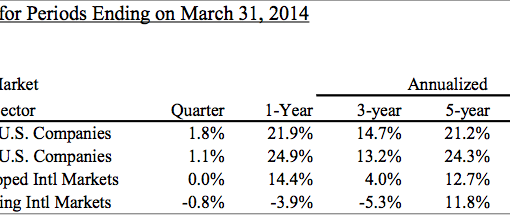 Author: Charles Sizemore
Author: Charles Sizemore
Covestor models: Sizemore Investment Letter and Tactical ETF, Strategic Growth Allocation
It seems like an eternity ago, but about four years ago the financial press was abuzz with a new catchphrase: decoupling.
Western economies and Japan were in bad shape. No one yet knew exactly how bad the 2008 meltdown would be, but at the very least it appeared that growth in the developed world would slow. Emerging markets, however, still looked healthy. Under the decoupling argument, emerging markets were ready to untether themselves from the debt-burdened West and find their own way in the world. Emerging market stocks would continue their bull market even if American and European stocks were flat or down.
Let’s just say it didn’t work out that way. Emerging market stocks, as measured by the iShares MSCI Emerging Markets ETF (NYSE: EEM), lost over 60 percent of their value in the bloodletting that followed (between late ’07 and early ’09), falling harder and faster than their developed peers.
There were two major flaws in the decoupling argument. First, fundamentally, most of the major emerging market economies (and most notably China) depend disproportionately on exports to the West. How, exactly, were emerging markets to continue humming along when their customers abroad weren’t buying? Secondly, correlations among global equities have risen in recent decades as capital markets have become more integrated. For a host of reasons—the rise of ETFs that bundle stocks together, the dependence on leverage that forces managers to liquidate quickly to cover losses, or that bogeyman of all bogeymen algorithmic trading—formerly uncorrelated markets rise and fall together now.
Why do I bring this up today? Because I’m starting to see the same arguments again today.
This week the Financial Times wrote that “Money has poured into emerging markets this year, with funds dedicated to the asset class enjoying their best start to a year since 2006 amid continued investor wariness over developed markets.” (See “Money Flows Back into Emerging Markets”)
Emerging market stocks, bonds and currencies have all had a fantastic start to the year. EEM is up over 14 percent year-to-date, nearly double the return on the S&P 500. But there lies an important point: though emerging markets have outperformed their developed market peers, they are very much moving the same direction.
In the “risk on / risk off” market that has dominated since the onset of the crisis, we are now in “risk on” mode. Virtually all risky asset classes—equities of all stripes, commodities, non-Treasury bonds, etc.—are enjoying a rally.
The good news is that I expect this to continue through the first half of 2012. After a year of running for the bunkers, investors seem to have finally recovered their risk appetites. Meanwhile, stock prices—and particularly emerging market stock prices—appear attractive, and the monetary conditions are loose. The pieces are apparently in place for a tradable, multi-month rally. More speculative sectors like emerging markets should be the best performers.
The bad news, of course, is that all of this goes out the window if Europe’s debt crisis takes a turn for the worse. Emerging market equities have not decoupled from Western markets, and I don’t expect that they will in my lifetime. When global capital markets are integrated, we all sink or swim together.



